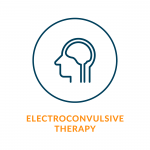
FDA Reclassification of ECT Devices: Implications for Clinical Practice

April 23, 2019 | Note: This information was prepared by the co-chairs, Richard Weiner, MD, PhD and Mustafa Husain, MD along with members of the NNDC ECT Task Group.
On December 26, 2018 the FDA published a final reclassification order for ECT devices or, according to FDA regulatory language, a final rule (FDA final rule on ECT reclassification). This final rule states that the FDA has determined that there is sufficient evidence for safety and effectiveness to reclassify ECT devices for certain usages (see below) from Class III (premarket approval) to Class II (special controls). Class II designation means that ECT device manufacturers may continue to market their devices in the USA as long as their ‘labelling’ (i.e. information on the device, in the user manual, and in other disseminated materials) is in conformance with the device-specific requirements contained in the final rule. Class II designation also represents, after a 40 year regulatory struggle with the FDA, an important victory for device manufacturers, ECT practitioners, and, most importantly, for the individuals with severe mental illness referred for ECT treatment. For ECT devices to have remained in Class III would have threatened the availability of ECT devices for clinical use in the USA.
Because the FDA does not regulate medical practice, psychiatrists can use ECT devices not only in conformance with these specifications (i.e. “on-label”), but also for any other clinically appropriate indications (“off label”). This is similar to the use of pharmacological agents which may be FDA approved for the treatment of one psychiatric disorder, but are used for other psychiatric disorders where there is clinical data to support the use of the agent and there is a clinician-patient relationship. In this regard, the FDA regulates device manufacturers, NOT how clinicians use the FDA approved devices in clinical practice.
This FDA reclassification to Class II specifies the use of ECT devices for the treatment of severe major depressive episodes (unipolar or bipolar) or catatonia in individuals aged 13 or over who are either treatment resistant or require a rapid response. The determination of “severe”, ”treatment resistant”, and “requiring rapid response” is left to the clinician. The FDA also did not include the administration of maintenance ECT, which they define as more than three months following the beginning of the index ECT course, as an on-label use of ECT in its reclassification. It should be noted that FDA did not imply that the use of ECT for other diagnoses or ages or the use of maintenance ECT is not safe or effective, but rather that they did not believe that sufficient evidence exists to reclassifiy ECT devices for these purposes. Again, practitioners are free to utilize “off-label” ECT in these situations, in a manner consistent with good clinical practice, including documentation of the rationale for such use in the patient’s medical record. In this regard, a variety of practice recommendations for ECT, including the 2001 American Psychiatric Association ECT recommendations1, support the use of ECT in mania, schizophrenia, children, and the use of short or long-term maintenance ECT.
In terms of the device-specific requirements that are included in FDA’s final rule, the following are those with the most pertinent impact on clinical practice:
1. Patient information should state that benefits of ECT may be temporary and that both acute and persistent memory impairment may occur with ECT.
2. Monitoring of cognitive performance should take place prior to, during, and at the end of an index ECT course with the use of standard neurocognitive instruments. For example, the Montreal Cognitive Assessment2 (MoCA) and the Mini-Mental State Examination3 (MMSE) are brief, copyrighted measures of global cognitive function that would fulfill this requirement.
A final implication of the FDA final rule is that research studies involving indications and usages not covered by the Class II reclassification must have an FDA-approved Investigational Device Exemption (IDE).
More detailed information about the FDA final rule and its potential effects on clinical practice can be found in a recent American Psychiatric Association Resource Document (APA ECT FDA resource document). We encourage ECT practitioners to review this document as well as the the FDA final rule.
References:
1. American Psychiatric Association. The Practice of Electroconvulsive Therapy: Recommendations for Treatment, Training, and Privileging. 2nd Edition, Washington, D.C., American Psychiatric Association, 2001
2. Moirand R, Galvao F, Lecompte M, Poulet E, Haesebaert F, Brunelin J. Usefullness of the Montreal Cognitive Assessment (MoCA) to monitor cognitive impairments in depressed patients receiving electroconvulsive therapy. Psychiatry Res. 259:476-481, 2018.
3. Folstein MF, Folstein SE, McHugh PR. “Mini-mental state”: A practical method for grading the cognitive state of patients for the clinician. J Psychiatr Res. 12:189-198, 1975